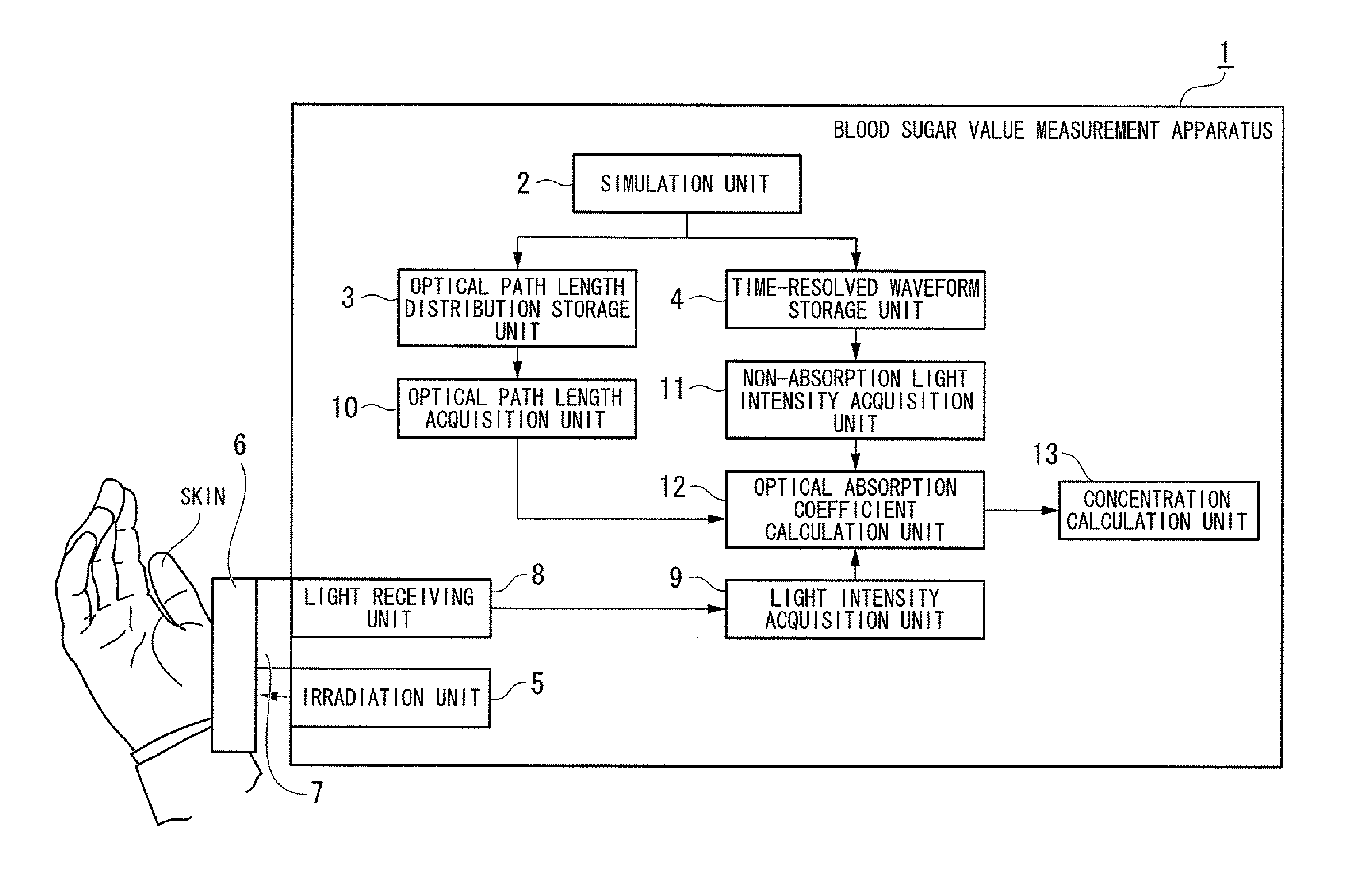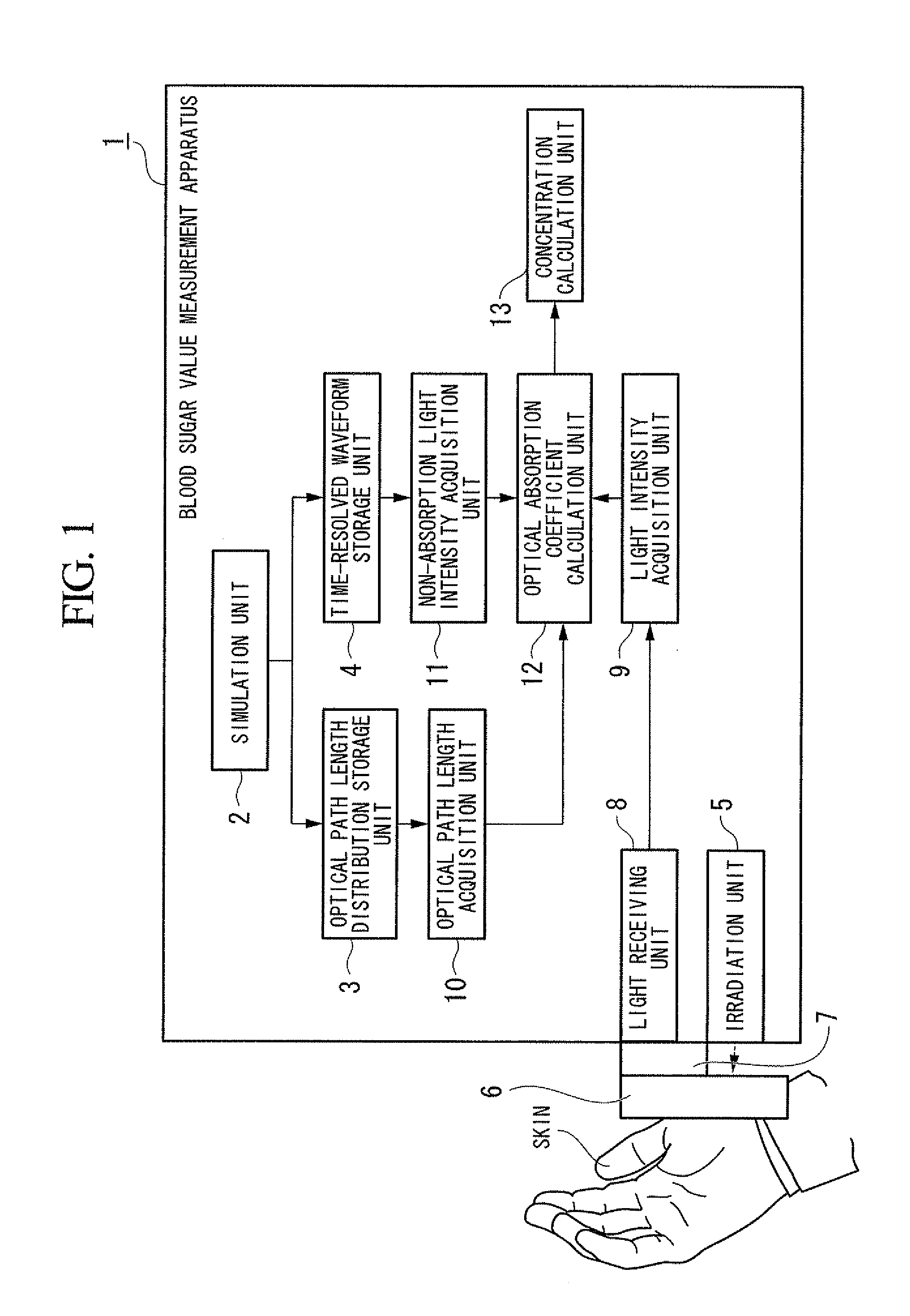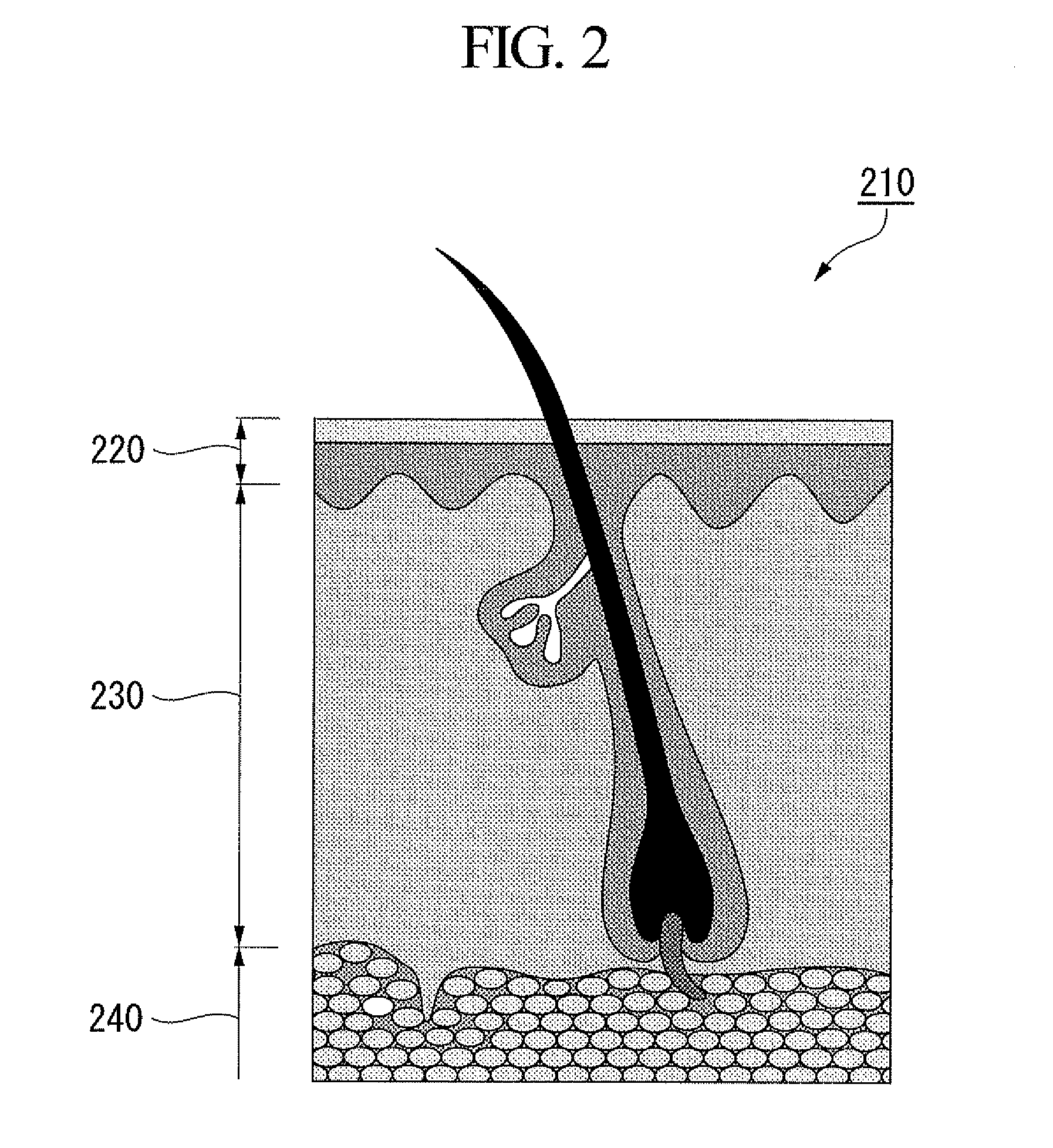Concentration determination apparatus, probe, concentration determination method, and program
a concentration determination and concentration technology, applied in the field of concentration determination apparatus, a probe, a concentration determination method, and a program, can solve the problems of complex and painful blood sample taking, infection risk, needle being left or infected during blood sugar measurement, etc., to achieve accurate measurement of the concentration of the target component, short time, and accurate detection of the target component concentration
- Summary
- Abstract
- Description
- Claims
- Application Information
AI Technical Summary
Benefits of technology
Problems solved by technology
Method used
Image
Examples
first embodiment
[0138]FIG. 1 is a schematic block diagram showing a configuration of a blood sugar value measurement apparatus of a first embodiment of the present invention.
[0139]The blood sugar value measurement apparatus 1 noninvasively determines a concentration of glucose (a target component) contained in a dermis (any layer) among a plurality of layers constituting skin (an observed object) of, for example, a palm. The blood sugar value measurement apparatus 1 includes a simulation unit 2, an optical path length distribution storage unit 3, a time-resolved waveform storage unit 4, an irradiation unit 5, a light guide unit 6, a light scattering medium layer selection unit 7, a light receiving unit 8, a light intensity acquisition unit 9, an optical path length acquisition unit 10, a non-absorption light intensity acquisition unit (light intensity model acquisition unit) 11, an optical absorption coefficient calculation unit 12, and a concentration calculation unit 13.
[0140]The simulation unit ...
second embodiment
[0238]FIG. 12 is a schematic block diagram showing a configuration of a blood sugar value measurement apparatus of a second embodiment of the present invention. A difference between a blood sugar value measurement apparatus 31 of the present embodiment and the blood sugar value measurement apparatus 1 of the first embodiment is that the light intensity acquisition unit 9 and the optical absorption coefficient calculation unit 12 are substituted with a light intensity acquisition unit 32 and an optical absorption coefficient calculation unit 33 having different functions from those of the light intensity acquisition unit 9 and the optical absorption coefficient calculation unit 12.
[0239]The light intensity acquisition unit 32 acquires a time change of a light intensity, between a given time and at least a given time τ, of backscattered light radiated from a dermis, which has been received by a light receiving unit 8.
[0240]The optical absorption coefficient calculation unit 33 calcula...
third embodiment
[0253]Hereinafter, a third embodiment of the present invention will be described in detail with reference to the accompanying drawings. FIG. 14 is a schematic block diagram showing a configuration of a blood sugar value measurement apparatus according to a third embodiment of the present invention.
[0254]A blood sugar value measurement apparatus 100 (a concentration determination apparatus) includes a simulation unit 101, an optical path length distribution storage unit 102, a time-resolved waveform storage unit 103, an irradiation unit 104, a light receiving unit 105, a measurement light intensity acquisition unit 106 (light intensity acquisition unit), an optical path length acquisition unit 107, a non-absorption light intensity acquisition unit 108 (light intensity model acquisition unit), an optical absorption coefficient calculation unit 109, and a concentration calculation unit 110.
[0255]The blood sugar value measurement apparatus 100 measures a concentration of glucose (a targ...
PUM
 Login to View More
Login to View More Abstract
Description
Claims
Application Information
 Login to View More
Login to View More - R&D
- Intellectual Property
- Life Sciences
- Materials
- Tech Scout
- Unparalleled Data Quality
- Higher Quality Content
- 60% Fewer Hallucinations
Browse by: Latest US Patents, China's latest patents, Technical Efficacy Thesaurus, Application Domain, Technology Topic, Popular Technical Reports.
© 2025 PatSnap. All rights reserved.Legal|Privacy policy|Modern Slavery Act Transparency Statement|Sitemap|About US| Contact US: help@patsnap.com



